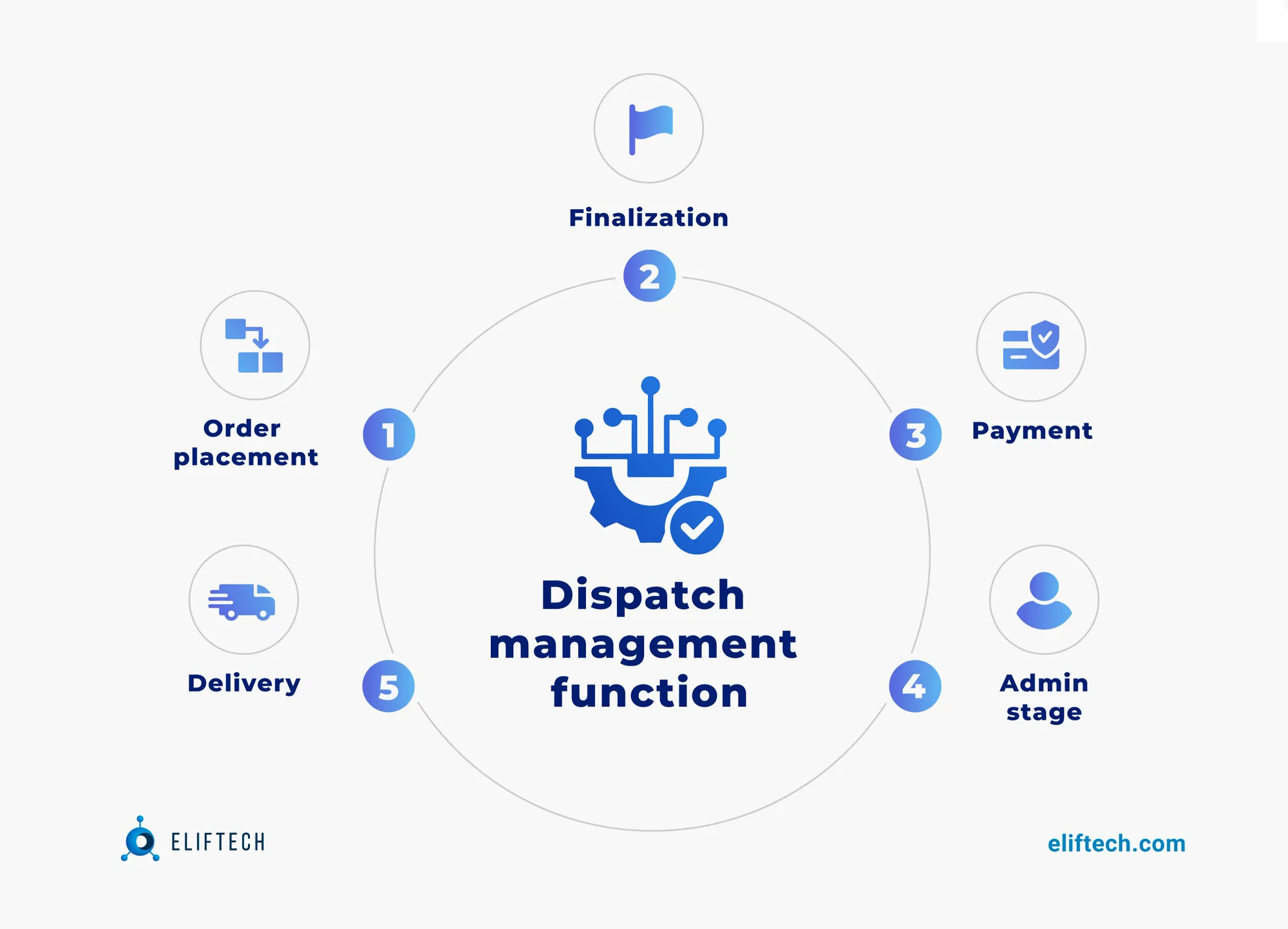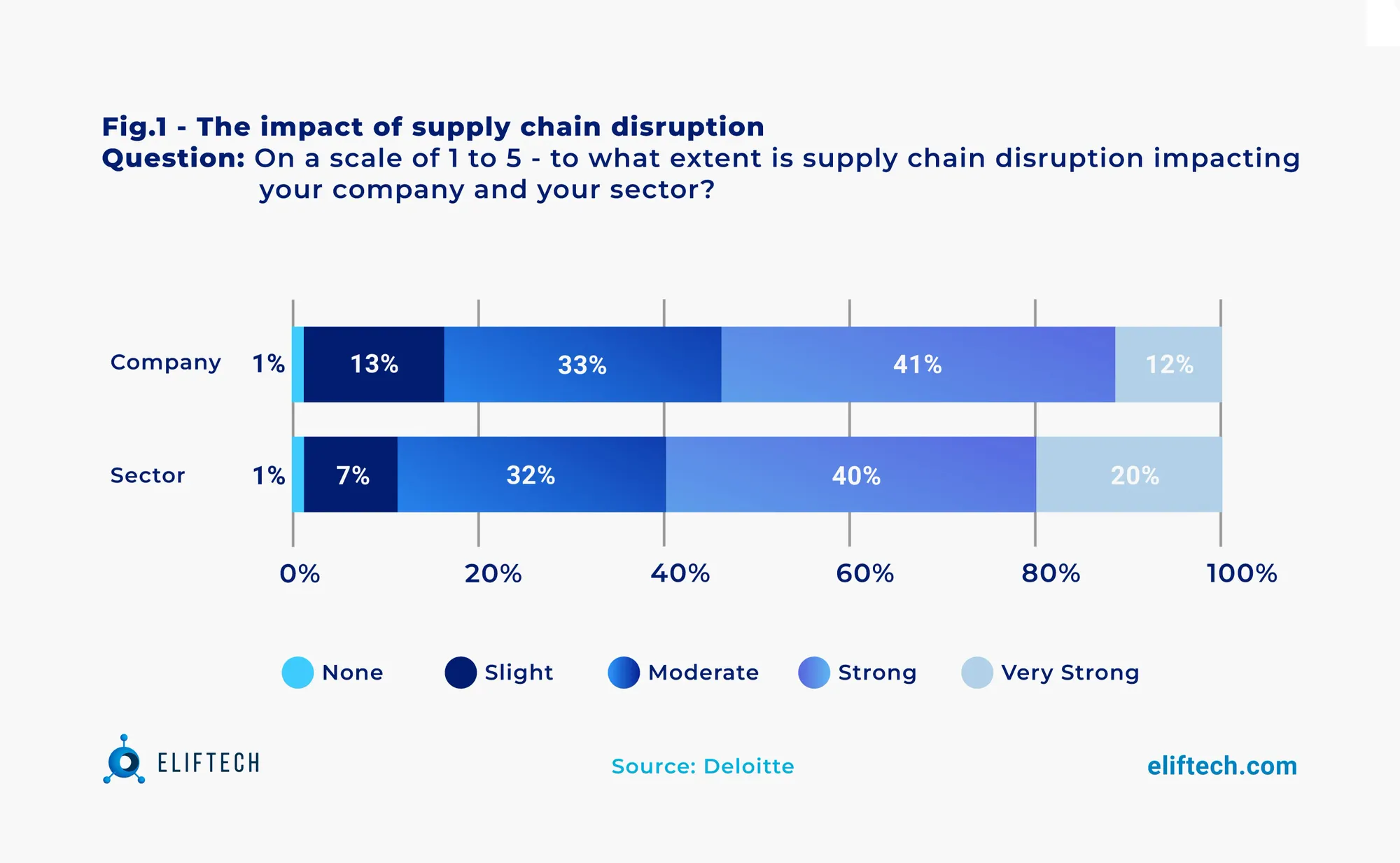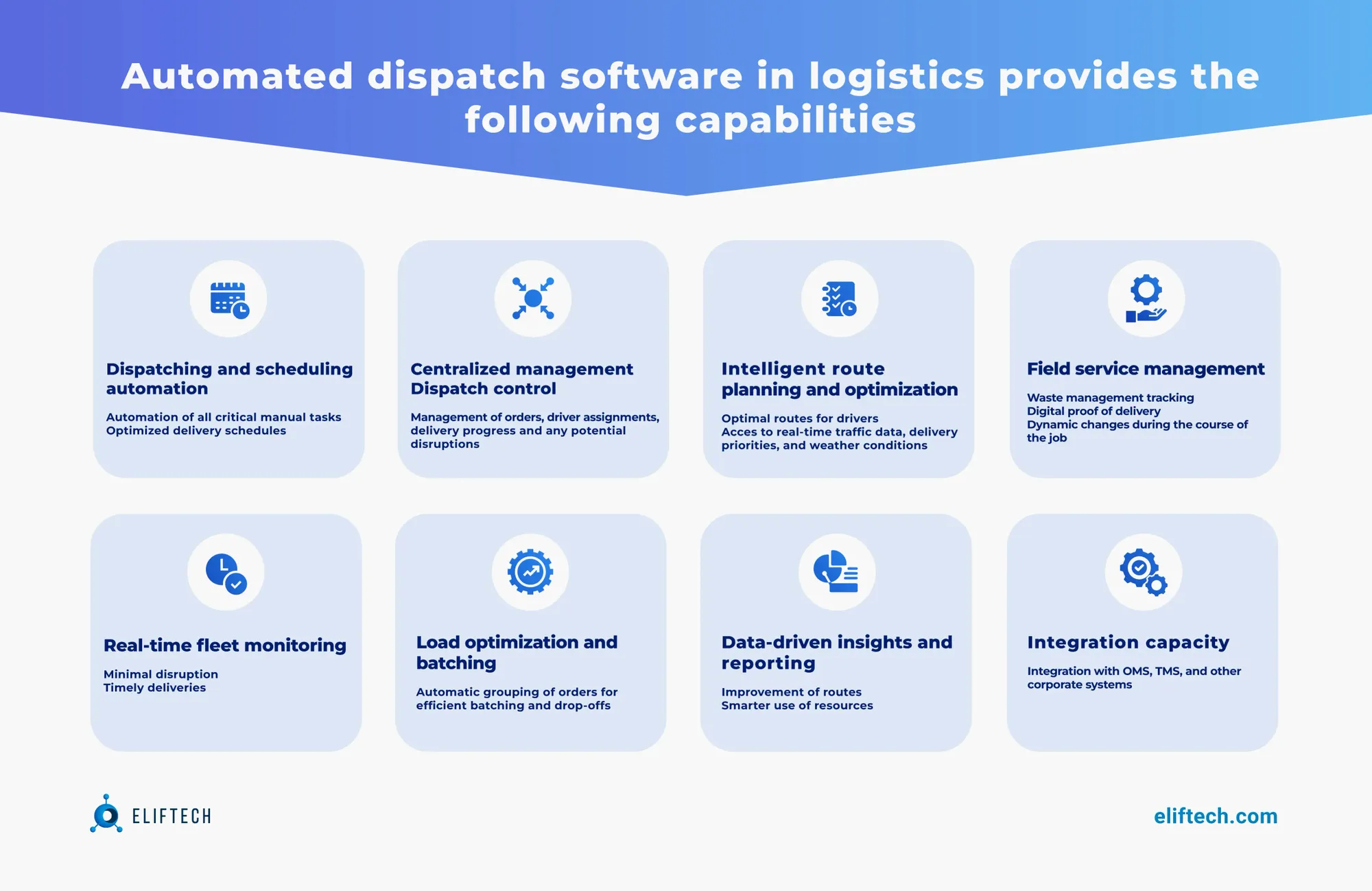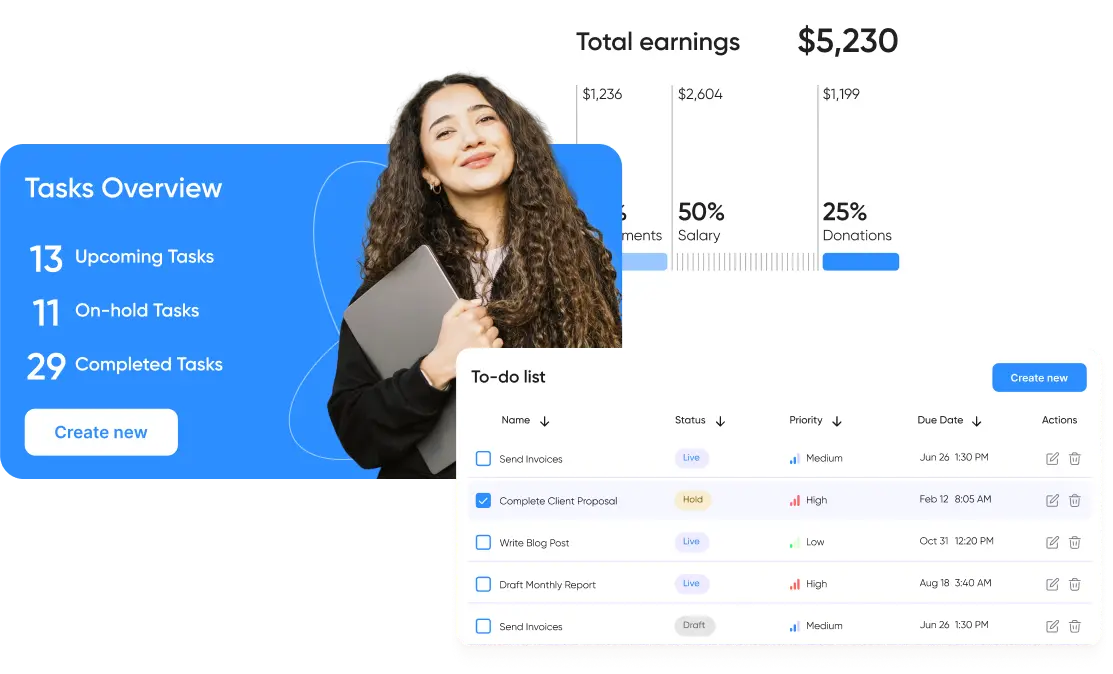Logistics
Improving Logistic Dispatch With Modern Dispatch Software
To keep up with what customers want, deal with more deliveries, and control costs, businesses often hire more drivers, engage more contracted fleets, and manage these operations through paper spreadsheets. But with so many trucks, information, and packages moving smoothly, and without proper dispatch software in place, it's like solving a puzzle missing all the pieces – finding the best way to deliver parcels from point A to B while saving money and gaining more efficiency.
The good news is that logistic dispatch is getting a serious upgrade, transforming into a seamless, agile, and highly effective process. Ready to see how logistics is getting a modern makeover? Our article has everything you need to know covered.
Why traditional dispatch management is a realm of challenges
3PL logistics providers are burdened with many problems rooted in traditional linear supply chain models. Technical restrictions, improper infrastructure, and lack of digital culture also add to that complexity and become daily brain teasers. To tackle these problems head-on, it's crucial to start by putting them on the table.
Communication gaps
Traditional dispatch systems often experience communication breakdowns. This challenge creates confusion, delays, and errors for dispatchers, drivers, and other stakeholders. A lack of real-time information exchange can result in missed instructions, wrong route choices, and even missed delivery windows. If this point is left unresolved, a business will risk tarnishing its reputation and inevitably frustrate both customers and drivers sooner or later.
Limited traceability and tracking
Without real-time tracking and traceability, it becomes difficult to monitor the progress of dispatched goods. Traditional dispatch methods often lack robust tracking systems. If deliveries cannot be tracked in real-time, the chances to warn customers about delays or changes during transit are getting close to zero.
Inefficient route planning
Traditional dispatching techniques often involve primitive route planning techniques. Dispatchers use maps, experience, and manual calculations to determine routes for drivers. This strategy might result in longer, less fuel-efficient, and more time-consuming trips than necessary. As a result, inaccurate route planning not only increases operational costs but also contributes to longer delivery times.
High operational costs
Deliveries and shipments include a complex procedure that involves many processes, including sorting orders, assigning them, choosing drivers, and picking the best vehicles. Manual dispatching usually requires multiple teams, which clearly introduces redundancies and inefficiencies into the system.
Moreover, having a larger team doesn't always ensure the most efficient delivery routes. Human involvement impacts operational costs and can even lead to business losses, not to mention “human-factor” mistakes like inaccurate routes, fuel wastage, and poor resource allocation.
Low adaptability to sudden changes
Traditional dispatch struggles to handle sudden changes effectively. This becomes clear when faced with unexpected events like traffic jams, road closures, or weather-related delays. The rigid nature of these systems hinders their ability to respond to such unforeseen circumstances swiftly. Unfortunately, without the flexibility to adapt, on-time deliveries become impossible, leaving customers and businesses alike in trouble. Customers, who expect their packages on time, are left disappointed, and businesses are drowning in operational disruptions.
Paperwork overload
In traditional dispatch management, the reliance on physical paperwork can result in a major administrative load. From manually filling out shipping forms to processing invoices and receipts, paperwork slows down the shipping process and increases the chance for errors. Additionally, keeping an organized record of dispatch actions is difficult with paper-based systems.
Restricted scalability
One more challenge familiar to many businesses is an inability to handle increased delivery volumes. When operations scale up, traditional dispatch systems fail to process them effectively. This can slow down how resources are handled, and deliveries are made, holding back the business from growing as it should.
Furthermore, as businesses work with more partners and service providers, they struggle to see and manage everything clearly. Each partner uses their own way to keep track of things, making it complicated. In short, this makes growth tougher. Adding more partners means dealing with even more complex information and management.
So, what is dispatch software and how does it work?
In simple words, dispatch software uses automation to handle and optimize the process of assigning tasks, orders, or deliveries to drivers, fleets, or resources. By using algorithms and real-time data, these automated systems streamline and simplify the management of logistics operations to make effective decisions about planning, assignment, and route tracking.
Depending on the use case and business applications, dispatch software for trucking can help companies perform many different tasks. It can help organizations with workflow automation, rider or driver management, shift or roster setup, billing and invoicing, reassigning resources, and closely tracking their movements.
However, typically, at the heart of an effective automated dispatch app there are 4 essential elements:
- Real-time data integration ensures that all involved parties have access to the latest information, enabling informed decision-making
- Dynamic routing algorithms dynamically assign optimal routes to drivers, minimizing travel time and fuel consumption and improving delivery efficiency
- Monitoring mechanisms track the progress of deliveries in real-time, allowing for immediate intervention in case of issues
- Communication interfaces make it easy for drivers, dispatchers, and customers to coordinate and receive timely updates.
How does dispatch software work?
The workflow of the dispatch software for small business includes a number of basic steps.

Step 1. Order creation. Orders are the first thing to come in, each with specific details like delivery addresses and requested times. These orders are collected and stored in the software.
Step 2. Smart assignment. The software's advanced algorithms analyze all the orders and drivers available. Dispatch driver app matches each order with the best-suited driver or vehicle based on factors like distance, capacity, and delivery windows.
Step 3. Dynamic route planning & dispatch scheduling software. Once orders are assigned, the dispatch delivery driver app calculates the best routes for drivers to take. It takes into account delivery priorities, real-time traffic data, and even things like one-way streets and restricted zones. Delivery priorities are determined after preparing the order - the logistics provider automatically sends a message to the customer, guiding them to schedule their preferred delivery window online. The nature of the goods delivered can also influence these priorities.
Step 4. Real-time monitoring and status updates. When drivers go on their routes, the dispatch routing software does not remain passive. Instead, it actively and continuously monitors its positions in real-time. Thanks to this smart tracking, if there's unexpected traffic or a change in the plan, the software adapts and suggests new routes. In such cases, the software sends alerts to drivers, ensuring they stay on track and delivery is as efficient as possible.
Step 5. Communication. In this system workflow, everyone stays connected through the dispatch management software. Drivers get updates on new orders, changes, or any special instructions. Dispatchers can monitor progress and provide assistance if needed. Customers receive notifications about when their delivery will arrive.
With all these smart features working together, deliveries become more efficient. Optimized routes lead to reduced delays, keeping all parties well-informed about ongoing activities, resulting in streamlined operations and satisfied customers.
Importance of Optimizing Logistic Dispatch
The current supply chain challenges, combined with significant global events like the COVID-19 pandemic, the Ukraine war, and the Suez Canal blockage, have caused considerable disruptions for supply chain companies.
For instance, Deloitte conducted a comprehensive survey among German manufacturers to gain insights into the impact of these disruptions on their business operations.

More than half (53%) of the German manufacturing companies surveyed said that supply chain issues are strongly (41%) or very strongly (12%) affecting their performance. An even bigger majority (60%) believe these disruptions are an even bigger problem for the whole sector. While Germany and the EU are, in many ways, unique geographical regions, the issues they cite are in many ways inherent to the industry as such.
This prevailing scenario explains why numerous global organizations, influenced by industry-specific challenges, technical limitations, and pivotal global events, are actively adopting modern dispatch management solutions. These tools are engineered to outpace legacy systems, effectively tackle modern challenges, and bring a transformative change in the dispatch process to enhance efficiency and productivity.
The benefits of adopting such solutions are manifold:
Increased speed of service. As we already mentioned, customers today want their packages delivered almost before they order them. It explains the demand for same-day deliveries and customer willingness to pay more for such speedy services. That shows how automated dispatch management software can come into play.
Utilizing the technology available today, businesses and logistics providers can reduce manual efforts, increase the speed of service, and ensure dispatch operations are performing faster and correctly. With real-time tracking and optimization capabilities, businesses can efficiently allocate resources and optimize routes, enabling them to deliver goods faster and more efficiently than traditional dispatch methods.
End-to-end visibility and tracking. Everyone involved in the supply chain ecosystem needs visibility, transparency, and clarity. Drivers must know the pickup location, the designated loading bay, and the required timing. Likewise, retail staff want to know which orders to prepare, where to put them, and when. Similarly, customers want to know where their driver or technician is, especially during urgent situations.
Using automated mobile dispatch software changes things. Users get an estimated time of arrival (ETA) on the tracking page and alerts about problems like breakdowns, traffic, or bad weather. This means if something unexpected causes a delay, the customer knows quickly. Retail staff and drivers also get clear instructions on needed actions regardless of the scenario. This allows retailers to manage order preparation and placement efficiently and drivers to navigate their routes with confidence, resulting in increased operational efficiency and customer satisfaction.
Moreover, for businesses, the benefits are twofold: alongside real-time shipment tracking, smart dispatch systems can help them save money by providing predictive alerts for scenarios that may incur additional shipping costs.
Reduced transportation costs. Transportation costs have always been a big deal for logistics companies, and cutting them down using traditional methods is tough. However, automated, well-planned dispatch management can be a missing part of the puzzle. By streamlining their dispatch operations, businesses may increase the cargo capacity of their fleets and reduce the need for additional drivers to handle daily order volumes. Reducing driver churn rates can also free up funds that can be used to rehire and retrain new drivers, thereby reducing transportation costs.
As a whole, automated dispatch solutions help businesses reduce transportation costs by:
- Optimizing routes and the number of trips
- Delivering multiple orders in a single trip
- Optimizing resource use
- Addressing last-mile challenges
- Implementing smart non-delivery (NDR) and return-to-origin (RTO) management
- Incorporating Proof of Delivery (PoD) functionalities
- Employing routing algorithms informed by various custom constraints
Automated fleet management. Failed deliveries disappoint not only customers but fleet drivers as well. Drivers look for businesses that respect their time and hard work, and effective dispatch management shows that respect.
These solutions help drivers plan their routes better and know that any issues will be fixed quickly. Everything, from managing shifts to handling bills and claims, is automated. With these systems in place, drivers can focus on their jobs without unnecessary stress, while businesses can enhance their operations and keep both customers and drivers satisfied.
Ready to optimize logistic dispatch for improved efficiency and productivity gains? Contact our expert team today for collective brainstorming of next-to-do actions.
What Technologies are Most Valuable to Dispatch Management Software?
Among the technologies that are transforming dispatch management, Artificial Intelligence (AI) and Machine Learning (ML) take the central stage. These advanced technologies participate in a number of critical system areas, including route optimization and predictive analytics.
AI-powered route optimization in dispatch systems uses real-time traffic data, delivery priorities, and dynamic variables like weather conditions to calculate the most efficient routes.
ML algorithms are like smart students who learn from experience. They help to continuously learn from data patterns, enabling dispatchers to anticipate potential bottlenecks and make route adjustments accordingly.
Predictive analytics, which comes from using AI and ML together, makes dispatch systems even more clever. This technology helps dispatch systems predict demand fluctuations. This way, businesses can plan ahead, allocate resources wisely, and make sure timely deliveries. In addition, these technologies use old data and patterns to make better decisions about routes and where to allocate resources.
Why Are Integrations So Important for Automated Dispatch Systems?
Automated dispatch systems vary from basic applications to comprehensive platforms that connect the entire supply chain. That explains why these platforms often integrate with external fleets, retail systems, warehouse management systems, CRM, TMS, ERP, and others to create a unified ecosystem where data flows seamlessly, eliminating data silos and enhancing overall efficiency.
By integrating WMS with automated fleet dispatch software, businesses can achieve a synchronized flow of information. For example, when an order is placed, the WMS can immediately communicate the availability of the product and its location in the warehouse to the dispatch system. Or, orders created in ERP can flow seamlessly into the dispatch system, ensuring accurate assignment and real-time updates. Similarly, CRM data can be used to improve the customer experience by personalizing the delivery experience.
Key Capabilities of Automated Dispatch Software
The delivery dispatch software's capabilities can vary based on the specific needs of each business. However, there are some key features that empower logistics companies to achieve the following advantages:

Dispatching and scheduling automation
This functionality of scheduling and dispatch software automates all critical manual tasks. So, the next time you need to track the locations and status of field agents and vehicles - leave this job for automated dispatching. The software uses advanced algorithms to match tasks with drivers based on factors such as their current location, available vehicle capacity, and the urgency of each task.
Based on this information, it further automatically generates optimized delivery schedules, a valuable capability that significantly reduces the risk of errors and delays. As a result, the entire dispatch process becomes smoother, more organized, and better equipped to handle varying demands.
Centralized management
In different scenarios, shippers might want to manage both their own drivers and external ones together, while others prefer to start dispatching at the fleet level and then let master contractors fine-tune the details for outsourced drivers and vehicles. All these requirements emphasize the importance of centralized dispatch control.
With all information accessible from a centralized dashboard, dispatchers, managers, and other stakeholders can efficiently monitor and manage orders, driver assignments, delivery progress, and any potential disruptions. This holistic view helps decision-makers to manage resources wisely, optimize routes in real time, and guarantee a smooth delivery process from order creation to final delivery. It also reduces the potential for misunderstandings or duplication of effort that can easily happen when managing fragmented systems.
Intelligent route planning and optimization
Transportation dispatch software’s intelligence creates optimal routes for drivers. It considers real-time traffic data, delivery priorities, and even weather conditions, reducing travel times and lowering fuel consumption.
However, when it comes to oversized deliveries and specific services, it is essential to take into account the time required for loading and unloading in order to coordinate trucks and plan delivery times effectively. Dispatchers often want to know if the recipient has a place to load/unload. Otherwise, dispatchers prefer smaller delivery vehicles as they are easier to park. However, if larger vehicles are used, the time on site may need to be adjusted for parking and unloading.
Smart trucking dispatch software will be able to not only plan the best routes but also optimize dispatch and even truck loading on the vehicle level. These capabilities will both save time and ensure you are utilizing the optimal vehicle for each delivery or service.
Field service management
Today, customers want to change orders, track them in real time, and use digital capabilities when working with field service companies. Thus, beyond basic dispatching, automated service dispatch software can provide field technicians with various tools designed to improve task management efficiency.
These solutions include crucial functions like waste management tracking, digital proof of delivery, and dynamic changes during the course of the job. With the help of these features, the software streamlines and improves a number of field operating processes, boosting productivity and operational efficiency. It also helps businesses meet modern customer needs while reducing service time and costs.
Real-time fleet monitoring
Courier dispatch software helps companies track their fleet and control their movements throughout the fulfillment process. This real-time end-to-end visibility allows dispatchers to ensure minimal disruption and maintain timely deliveries even in case unexpected events like traffic congestion or route deviations happen, as they quickly receive alerts and adjust routes or allocate needed extra resources.
Load optimization and batching
Smart dispatch software should combine deliveries in one trip to fulfill more orders efficiently. That’s why such software should work alongside load optimization tools that automatically group orders for efficient batching and drop-offs.
When planning routes and optimizing loads, the software considers things like distance, timing for each delivery stage, and specific business needs. Additionally, it helps with proper batching, assisting with grouping orders by similar delivery times and locations.
Data-driven insights and reporting
As we mentioned earlier, predictive analytics and advanced AI and ML capabilities are core technologies that make automated dispatch software valuable for modern logistics businesses. Their use helps analyze both past and current data, allowing the software to provide valuable insights into their delivery operations.
By examining factors such as delivery times, routes, driver performance, and customer feedback, the software generates useful information. This helps businesses make smart decisions, find ways to improve, and make their delivery process even better. For example, they can improve routes, use resources smarter, and make customers happier based on what the delivery dispatch software tells them. It's all about using data to make things work even smoother.
Integration capacity
Dispatching solutions operate within a complex ecosystem, including distinct variables like inventory storage, order management, fleet tracking, and more. Therefore, it's crucial to prioritize seamless integration with other essential tech tools in the existing ecosystem, such as Order Management Systems (OMS), Transportation Management Systems (TMS), and other corporate systems.
For instance, integrating with OMS allows for real-time order data exchange, while TMS integration facilitates optimized route planning based on updated delivery information. These coordinated processes streamline tasks and minimize manual effort, ultimately leading to improved accuracy and productivity in the entire logistics process.
Moreover, modern logistics providers often prefer easy real-time integrations to support multiple delivery models. This allows them to work with both owned fleets efficiently and contracted carriers as needed, depending on demand and scheduled dispatching. The success of such integrations lies in connecting data, resources, and operations in real-time.
All of the above capabilities translate to substantial benefits businesses can receive in return for their modernization efforts.
- Feasible efficiency gains, resulting in streamlined operations and reduced time wastage;
- Cost savings, as optimized routes and resource utilization minimize unnecessary expenses;
- Improved customer satisfaction due to accurate delivery times and enhanced communication;
- Scaling capabilities to accommodate increased demands and expand business operations and partnerships
- Increased confidence in business operations, allowing businesses to move further without concerns
- High employee satisfaction due to simplified workflows and accurate information leads to happier drivers and staff, enhancing overall team morale.
- Minimized errors thanks to automation that reduces manual intervention, minimizing human errors and ensuring accurate order assignments and route planning.
- Continuous improvement, thanks to analytics and insights from the software, facilitates ongoing process improvement, driving business growth and innovation.
Do these benefits match what your business needs? Talk to our team about your challenges, and we'll provide efficient solutions.
Conclusion
Combining efficiency and innovation is revolutionizing the delivery industry, but technological advances alone are not enough. Currently, customers and global trends have a significant impact on the market and dictate what businesses should prioritize. As such, it's crucial for companies to adopt new technologies, including automated dispatch software, to streamline their delivery processes and overcome industry challenges. By embracing these advancements, businesses are better equipped to meet customer demands and stay ahead in an increasingly competitive market.
ElifTech is a software development company specializing in providing efficient dispatch management software. Our expertise lies in developing advanced software solutions that automate manual work, leading to increased operational efficiency. We develop dispatch management software that effectively monitors field agents and vehicles, ensuring better coordination and timely delivery. Additionally, our team can implement task automation capabilities that reduce errors and optimize operations based on real-time data.
Contact us to develop industry-leading software that will enable you to meet customer requirements and achieve operational success.
Browse our case studies and get actionable insights to drive your success
See more
